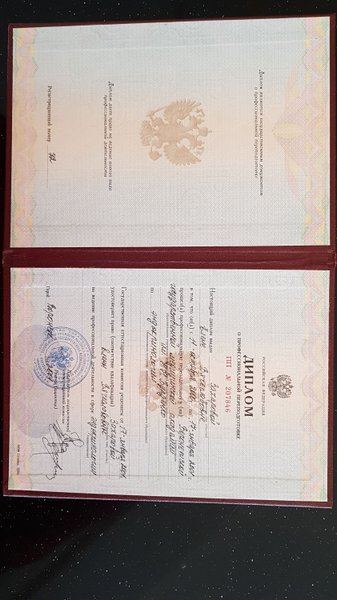Кракен даркент

Недавно Tor Project закончил поддержку 16-символьных доменов в зоне.onion, также известных как адреса v2, и заменил их доменами длиной 56 символов, известными как v3. Исследователи подсчитали, сколько сайтов уже перешли на новый стандарт.Эти перемены назревали давно и были призваны улучшить конфиденциальность, безопасность и устойчивость сети Tor, в том числе к атакам, связанным с деанонимизацией пользователей. Об этих изменениях объявили еще в прошлом году, то есть весь процесс перехода занял больше года.Сентябрь 2020: разработчики Tor Project выпустили Tor версии 0.4.4, который предупреждал операторов серверов о том, что поддержка доменов v2 скоро будет прекращена.Июль 2020: вышел Tor 0.4.6, который запрещал владельцам серверов регистрировать новые домены v2.Октябрь 2021: выпущены стабильные версии для всех веток Tor, в которых поддержка доменов v2 отсутствовала.Ноябрь 2021: релиз браузера Tor 11, в котором окончательно прекратили поддержку доменов v2.Увы, несмотря на всю эту подготовку, эксперты компании DarkOwl, занимающейся телеграм мониторингом даркнета, сообщают, что сеть Tor в основном по-прежнему состоит из серверов, на которых работают старые домены v2.«За последние шесть недель платформа DarkOwl Vision фиксировала в среднем 104 095 активных сервисов.onion, работающих по обоим стандартам, из которых 62% — адреса v2, а 38% — адреса v3», — пишут специалисты.DarkOwl пишет, что в июле 2021 года произошел всплеск создания новых доменов v3, который совпал предупреждениями Tor Project, которые стали отображаться перед доступом к доменам v2. В результате, только за последние две недели июля, было зарегистрировано более 2 900 доменов v3.Рост продолжается и сейчас, ведь в настоящее время новые домены v2 больше нельзя регистрировать, но пользователи еще могут получить доступ к существующим сайтам с помощью старых версий браузера.Исследователи ожидают, что сайты v2 окончательно исчезнут в следующем году. Дело в том, что большинство операторов узлов Tor обновят свои серверы до версий, которые перестанут поддерживать домены v2 вовсе, а также не станет ретрансляторов Tor, способных маршрутизировать трафик на домены старого поколения.
Кракен даркент - Кракен телеграм
Как известно наши жизнь требует адреналина и новых ощущений, но как их получить, если многие вещи для получения таких ощущений запрещены. Приложения для смартфонов Самым очевидным и самым простым решением для пользователей iPhone и iPad оказался браузер Onion, работающий через систему «луковой маршрутизации» Tor (The Onion Router трафик в которой почти невозможно отследить. Требует включенный JavaScript. Onion - The Pirate Bay,.onion зеркало торрент-трекера, скачивание без регистрации. Whisper4ljgxh43p.onion - Whispernote Одноразовые записки с шифрованием, есть возможность прицепить картинки, ставить пароль и количество вскрытий записки. Хорошая новость, для любых транзакций имеется встроенное 7dxhash шифрование, его нельзя перехватить по воздуху, поймать через wifi или Ethernet. Onion - Autistici древний и надежный комплекс всяких штук для анона: VPN, email, jabber и даже блоги. Таким образом, интернет пользователи абсолютно с любых точек земного шара получают доступ к желаемым сайтам или интернет - магазинам. Org b Хостинг изображений, сайтов и прочего Хостинг изображений, сайтов и прочего matrixtxri745dfw. Нужно знать работает ли сайт. Присутствует доставка по миру и перечисленным странам. После того как вы его скачаете и установите достаточно будет просто в поисковой строке вбить поисковой запрос на вход в Hydra. Единственное, что требуется от пользователя 1 доллар за универсальную версию для всех платформ Apple. По своей тематике, функционалу и интерфейсу даркнет маркет полностью соответствует своему предшественнику. Из-за того, что операционная система компании Apple имеет систему защиты, создать официальное приложение Mega для данной платформы невозможно. Установите Тор в любую папку на компьютере или съемном USB носителе. Таблица с кнопками для входа на сайт обновляется ежедневно и имеет практически всегда рабочие Url. Так как система блокчейн имеет свои особенности, стоит это учитывать перед тем как пополнить баланс на Мега Даркнет. Этот и другие сайты могут отображаться в нём. Onion/ - Torch, поисковик по даркнету. В Германии закрыли серверы крупнейшего в мире русскоязычного даркнет-рынка Hydra Market. Прекратим о грустном. Жека 3 дня назад Работает! Подробнее: Криптовалютные кошельки: Биткоин, Ефириум, и другие малоизвестные кошельки Банковские карты: Отсутствуют! Также у каждого продавца на площадке выставлены отзывы от предыдущих сделок. Onion - Torrents-NN, торрент-трекер, требует регистрацию. Onion - форум подлодка, всё о спутниковом телевидении. Вместо 16 символов будет. . Org так и не открылись. Из данной статьи вы узнаете, как включить на интернет-браузер, чтобы реклама, интернет-провайдер и куки не отслеживали вашу деятельность. Onion/ - Blockchain пожалуй единственный онлайн bitcoin-кошелек, которому можно было бы доверить свои монетки. И постоянно предпринимают всевозможные попытки изменить ситуацию. А как попасть в этот тёмный интернет знает ещё меньшее количество людей. Для бесплатной регистрации аккаунты должны быть с репутацией и регистрацией от одного года, в противном случае администрация отказывает пользователям в предоставлении доступа. Готовы? Однако вряд ли это для кого-то станет проблемой: пополняется он максимально оперативно. Топ сливы. Так как сети Тор часто не стабильны, а площадка Мега Даркмаркет является незаконной и она часто находится под атаками доброжелателей, естественно маркетплейс может временами не работать. Безусловно, главным фактором является то, что содержание сайта должно быть уникальными и интересным для пользователей, однако, Вы можете узнать что то новое из опыта других. Onion - Burger рекомендуемый bitcoin-миксер со вкусом луковых колец. Небольшой список.onion сайтов в сети Tor. Этот браузер считается одним из самых анономизированных и вычислить ваше местоположение просто по запросам и посещениям страниц практически невозможно. Legal обзор судебной практики, решения судов, в том числе по России, Украине, США. По. Ну, любой заказ понятно, что обозначает. Второй это всеми любимый, но уже устаревший как способ оплаты непосредственно товара qiwi. Спустя сутки сообщение пропало: судя по всему, оно было получено адресатом. Клёво12 Плохо Рейтинг.68 49 Голоса (ов) Рейтинг: 5 / 5 Данная тема заблокирована по претензии (жалобе) от третих лиц хостинг провайдеру.

Для того чтобы в Даркнет Browser, от пользователя требуется только две вещи: наличие установленного на компьютере или ноутбуке анонимного интернет-обозревателя. Заказать, эстакаду с доставкой от производителя апшерон, в наличии. Првиетствую, представляем Вашему вниманию Solaris - Форум и децентрализованный каталог моментальных покупок товаров теневой сферы. Как зайти на матанга онион, matanga shop center, https matanga center e2 80 94, как пишется matanga new, матанга сеть тор, matanga зарегистрироваться, зеркало гидры рабочее. Единственное "но" хотелось бы больше способов оплаты. Список сайтов. торговая платформа, доступная в сети Tor с 2022 года. Также в числе ключевых арендаторов магазины «Ашан «ОБИ» и «Леруа Мерлен». Первый способ заключается. Ее серверы. Наша матанга http matangapatoo7b4vduaj7pd5rcbzfdk6slrlu6borvxawulquqmdswyd onion market 6688, matanga union ссылка тор matanga2planet com, matanga matanga2original. Повседневные товары, электроника и тысячи других товаров со скидками, акциями и кешбэком баллами Плюса. Лучшие модели Эксклюзивный контент Переходи и убедись сам. Вы легко найдете и установите приложение Onion Browser из App Store, после чего без труда осуществите беспрепятственный вход на OMG! Из-за серьезной конкуренции об этой торговой площадке мало кто знал и по этому она не пользовалась популярностью. Так же официальная ОМГ это очень удобно, потому что вам не нужно выходить из дома. Осторожно! " торг" скидка 10 НА первый онлайн заказ. Реестр запрещенных сайтов. Мега российская сеть торговых центров, принадлежащих компании. Ведь наоборот заблокировали вредоносный сайт. 39,стр. С телефона не получается загрузить фото на сайтПодробнее.
